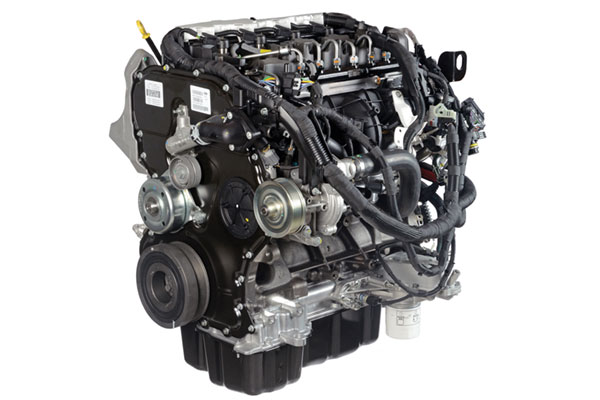The 2014 Ford Transit is rigged with a Power Stroke Engine

The 2014 Ford Transit is rigged with a Power Stroke Engine

It belongs to the second cohort of power stroke engines by the Ford after the 7.3 litre V8 first introduced in 1994
It was the year 1994 when Ford fans first became familiar with the term ‘Power Stroke’, there was a 7.3 litre V8 engine powering the Navistar, a Super Duty truck-line. After some time, Ford put the 6.0 litre turbodiesel V8 engine under that name which was appreciated and now, once again, Ford has put a newly designed 6.7 litre engine in it.
The name Power Stroke has always been used for single V8 turbo-diesel engines but from now on, in model-year 2014, it will belong to its own Ford Transit engine family. Customers in North America will be the first to have their new full-size Transit Van powered by second cohort of Power Stroke engines backed by the most wonderful 6R80 six-speed automatic transmission.
This engine has been in use for another Ford product, the global Ranger, which had 197 hp and developed 347 lb-ft of torque. For the North American market, Ford had to make some changes in the engine such as in Ranger Selective Catalyst Reduction (SCR) system was not required whereas the Transit will be the first Ford van using the DEF tank, the exhaust will be having the DEF injection system. For easy access, the DEF refill point is located behind the fuel door and the DEF interval is 7,500 – 10,000 miles, which is same as the oil change interval.
Ford has upgraded the after-treatment system for this engine, it is now using separate diesel oxidation catalysts and diesel particulate filter, both of these items when integrated into one element, they are known as Single Brick System (SBS), which is the trick behind DPF and DOCs.
The engineers at Ford have added a bypass mode to the EGR cooler which is not available in the 3.2 litre engine of global Ranger. There is now electrically controlled water-cooled valve which is specifically designed to keep up with the coolant pressure drops. Other modifications are made to the body which makes it easier to install the engine in Ford Transit
With this new upgrade the engine will be in smaller displacement but having as much as 25 percent better fuel economy.
Categories
- 2013 Dubai Motor Show
- 2013 Frankfurt Motor Show
- 2013 Geneva Motor Show
- 2013 Shanghai Motor Show
- 2013 Tokyo Motor Show
- 2014 Detroit Auto Show
- 2014 Geneva Motor Show
- 2014 New York Motor Show
- 2014 North American International Auto Show
- Alfa Romeo
- Aston Martin
- Audi
- Audi A4 Check Engine Light
- Automotive News
- Avensis
- Beijing International Motor Show 2014
- BMW
- Cadillac
- Chevrolet
- Chicago Auto Show 2014
- Chrysler
- Citroen
- Daihatsu
- Detroit Motor Show 2013
- Diesel Engines
- Engines
- EV
- Fiat
- Ford
- General
- General Motors
- Geneva Motor Show 2014
- GM
- Guest Post
- Honda
- Hyundai
- Ideal Engines Reviews
- Infiniti
- Infographics
- Isuzu
- Jaguar
- KIA
- LA Motor Show 2013
- Lancia
- Land Rover
- LandRover
- Lexus
- Lotus
- Maserati
- Mazda
- McLaren
- Mercedes Benz
- Mini
- Mini Cooper S
- Mitsubishi
- New Technology
- Nissan
- Peugeot
- Porsche
- Range Rover
- Renault
- SEAT
- Skoda
- Smart
- Subaru
- Super Cars
- Suzuki
- Top Ten
- Toyota
- Transmissions and Gearboxes
- Uncategorized
- Vauxhall
- Volkswagen
- Volvo
- VW
